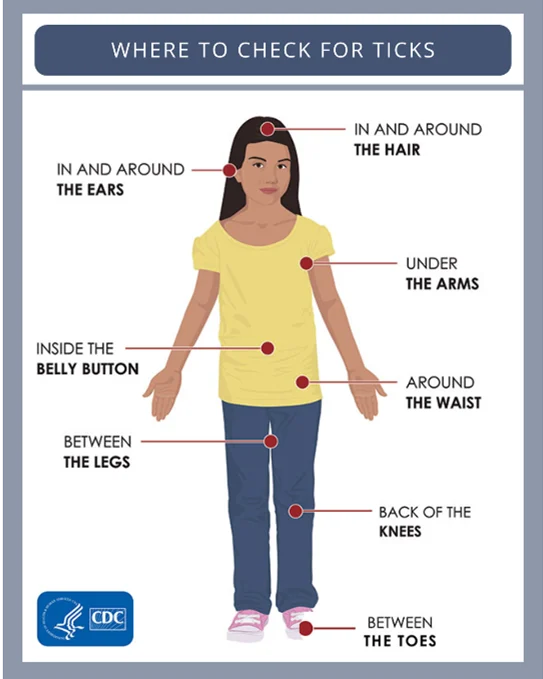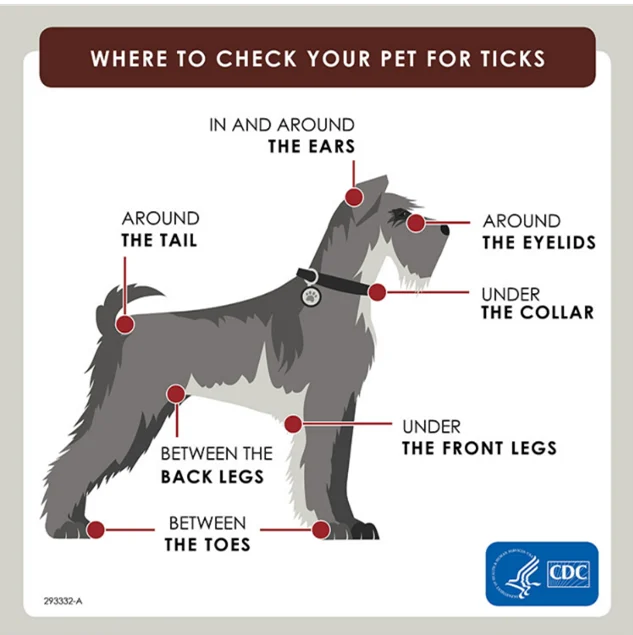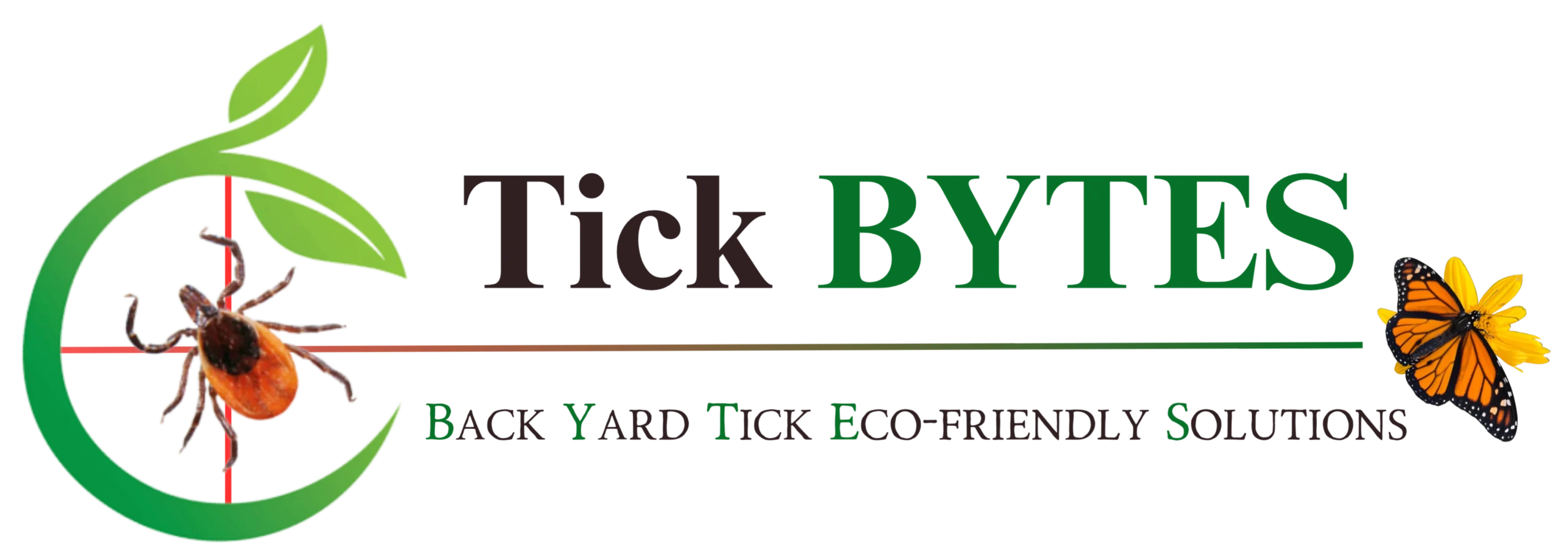May is officially Lyme Disease Awareness Month and a great time to educate yourself about Lyme disease, where the deer ticks are, and how to do proper tick checks on your family and companion animals.
Lyme disease, caused by the bacterium Borrelia burgdorferi, is primarily transmitted through the bite of infected black legged (deer) ticks.

Did you know that most cases of Lyme disease are acquired from deer tick encounters in your own back yard?
Bob attached a waterproof flannel cloth mounted to a pvc pipe and dragged the cloth along the edge of the lawn about 50 feet away from our home. In 10 minutes, he found 3 female deer ticks and 7 male deer ticks (shown in circle at upper right corner of photo). The edge (interface) between the groomed lawn and the woods is where deer ticks are likely to be found. Ticks will seek out damp, shady areas of your property and are often found in tall grass, rock walls, wood piles, or leaf litter.
*Tick Tips* Keep grass short, remove leaf litter, move play centers to well groomed, sunny areas, and create tick-safe zones in spaces where you and your family spend the most time.
Frequent Tick Checks
The longer a tick is attached, the greater the chances of contracting Lyme or additional tick-borne diseases. Frequent tick checks after any outdoor activity will reduce your risk of having a tick attachment.
Use your fingertips to check areas where ticks may have crawled to attempt to feed undisturbed. You will be feeling for a bump that hasn’t been in that spot before. Favorite sites for ticks to attach include between the toes, behind the knees, groin area, belly button, belt area, armpits, behind or in the ears, and in the hair.


Our pets are sentinels for tick activity. If they are picking up ticks when outside, you have ticks in your area. When your animals come inside, check their fur for ticks. Feel around and in the ears, check near the eyes, neck, under the collar, their body, under the legs, between the toes, and around the tail. Again, you are feeling for a bump that doesn’t belong. Even if your pet is wearing tick control products, ticks may be crawling or attaching to the animal.
*Tick Tip* Tick Encounter Pet Protection
Clothing & Repellent Protection
Here’s Bob prepared to go into tick territory. Notice his socks are pulled up over his light colored pants, and he is wearing sturdy boots, and a long-sleeved jacket. His pants and socks are from a company called Insect Shield ® They sell clothing that has been treated with permethrin, which provides bug protection. Even better, customers can send their own clothing in to be treated. These treated garments offer long-lasting repellency, which lasts through about 70 washings.
The socks Bob is wearing were purchased from Insect Shield. I like that there is an Insect Shield green and white shield on them so I know that they have been treated. We sent Bob’s pants and shirts to the company to be treated, and had the cross embroidery added. Insect Shield ® has frequent sales and incentives for customers. They also have dog accessories that offer protection for your pets.
We all know that children are not going to wear the recommended long sleeved, long pants tucked into socks with sturdy shoes. Our kids were typically in shorts, short sleeved shirts and wearing flip flops or barefoot. If you know that you or your children are going to be in tick habitat, use repellents. The EPA approved repellent website will help you determine your options.

Meet the Bloggers

Barb Maurais, president of Tick BYTES is a Lyme and associated diseases advocate, educational trainings and workshops to numerous community groups and organizations throughout Southern Maine.

Bob Maurais, Tick BYTES Integrated Pest Management Coordinator, is also our Blog photo model. Bob has been certified as a Commercial Master Pest Applicator in Maine for over 20 years, is a member of the IPM Working Group, and has developed content and presentations at local, state, and national conferences.
